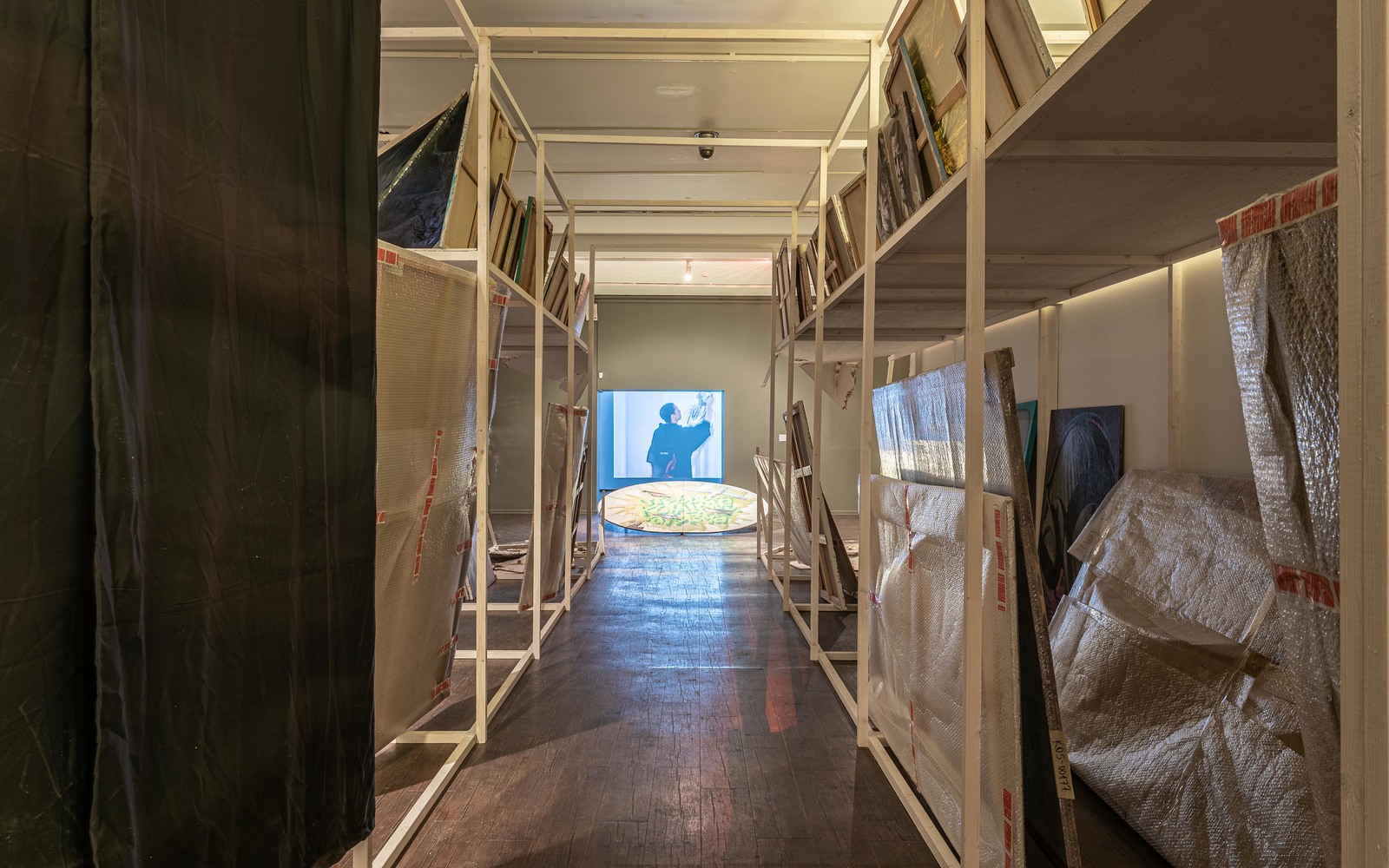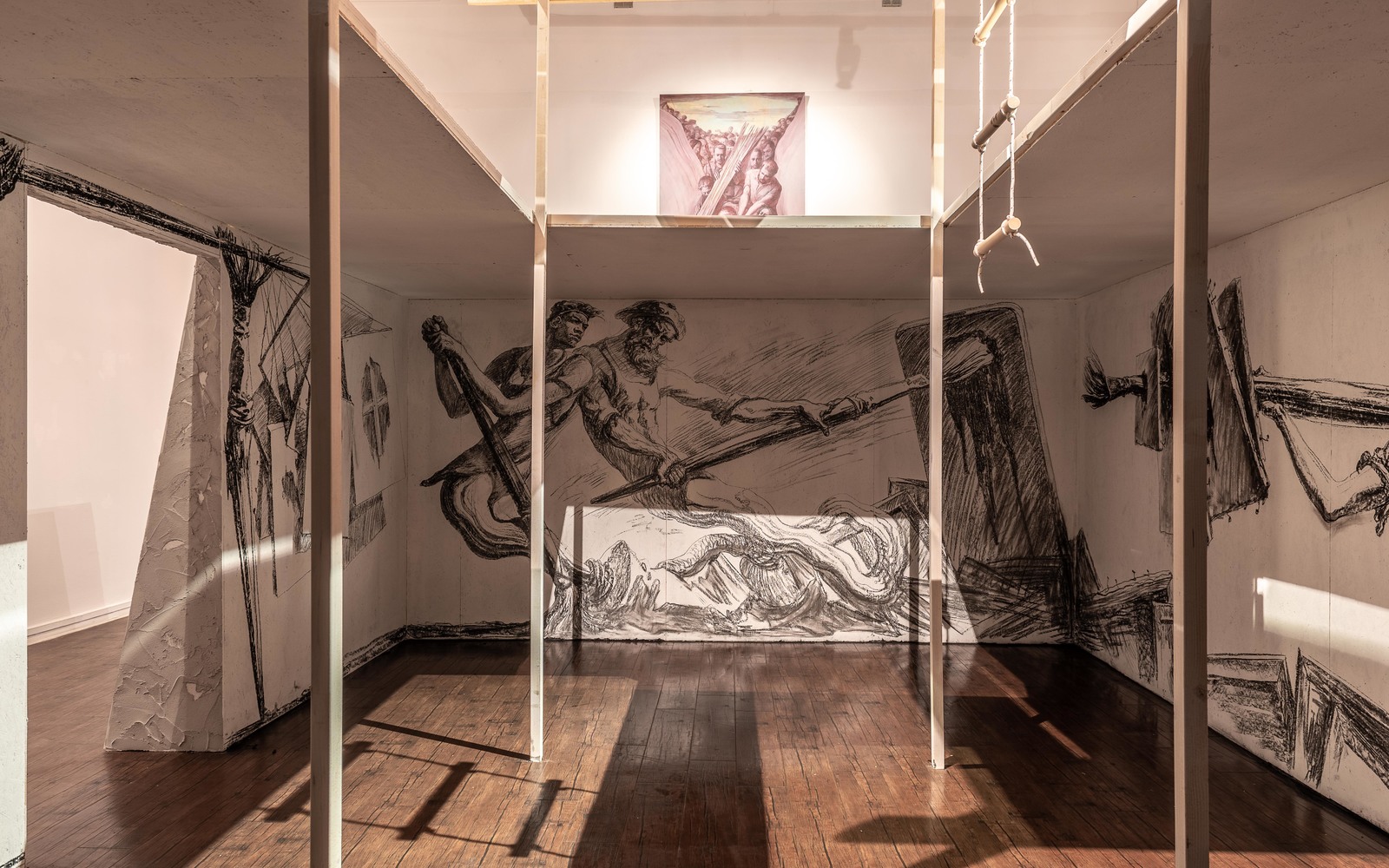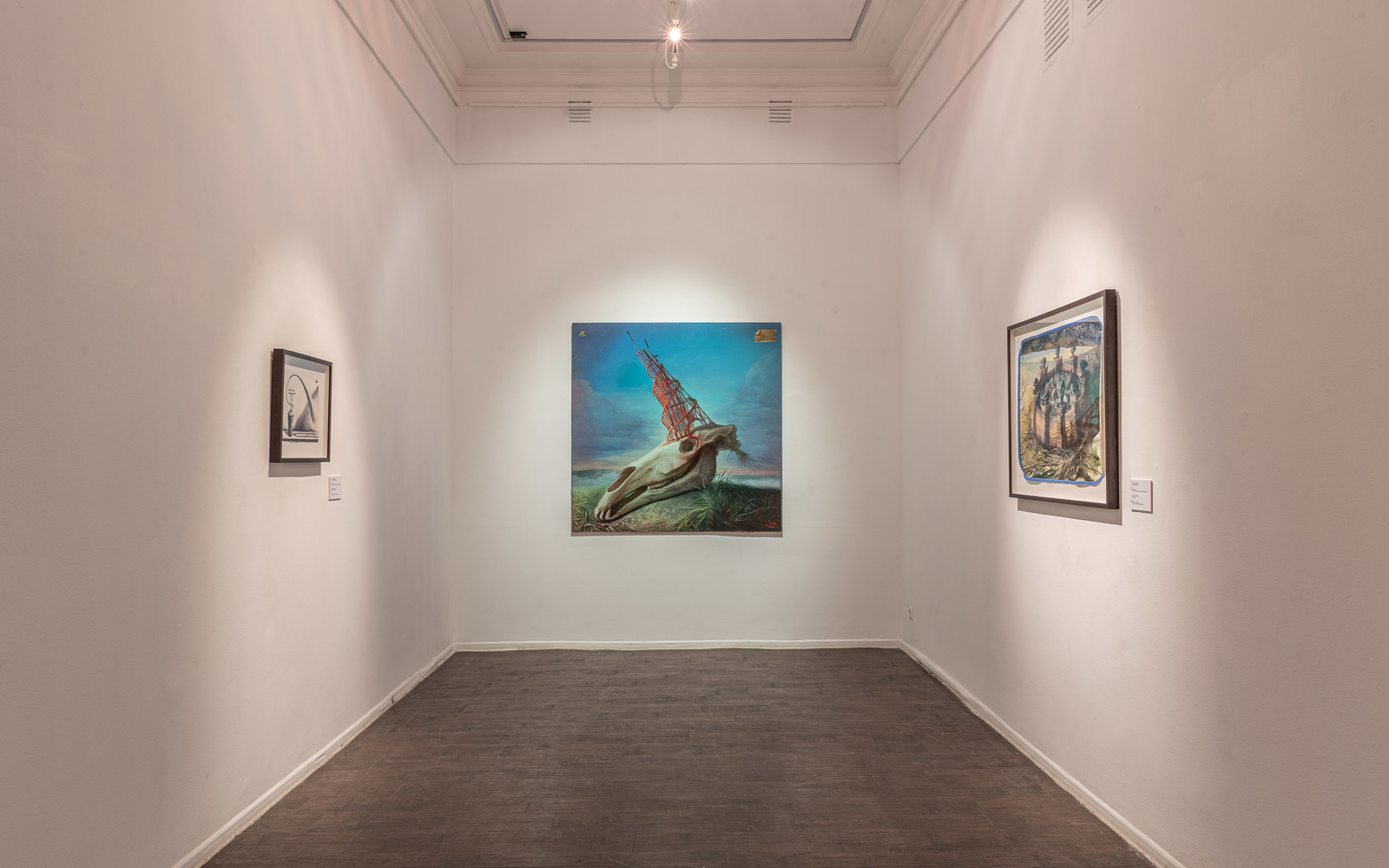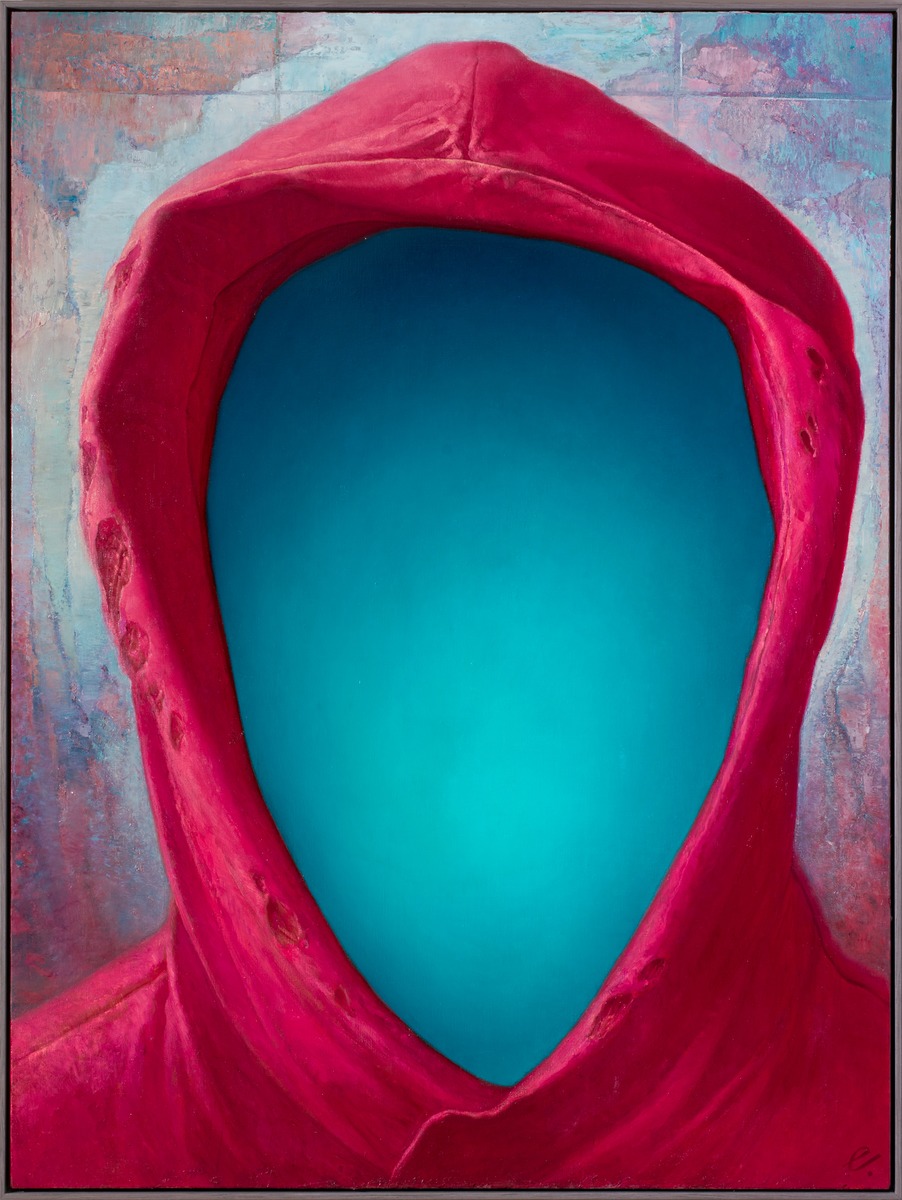




26 january — 17 march
Tuesday — Sunday, 12:00 — 21:00
ММОМА
Gogolevsky Boulevard, 10
Egor Koshelev is an internationally recognized artist, who has pursued a strategy of non-compliance with any trends, canons and -isms. He is an escapist that sheers away from institutional propriety, annoying many by making his art despite everything. Initially, the artist studied at the Stroganov Academy with a disciple of Deyneka, Vladimir Vasiltsov. In 2006, he completed his thesis on Tintoretto. Up to this moment, Egor's biography fits into the classical academic canon. However, living in spite of everything pushed him not to follow the beaten path, but to make a sharp turn and join the underground community of punks and graffiti artists.
Egor explains that after graduating from the monumental painting school in 2003, he decided to break with everything that the Academy had imposed on him, to reset himself and become an outsider. That's what he dared to do. Koshelev began bombing industrial zones with graffiti and turned into a writer.
From 2005 to 2009, Egor Koshelev mixed graffiti tags with surreal acid landscapes in easel painting. Letters became characters in his new style. They replace people. They suffer. They scream. They bleed. The heraldry and emblems of empires are part of this strange acidic performance too, which is both in line with street subculture and stands against it. The alchemic marriage of street art with academic schooling reflects the pursuit for the shadows of official culture. The shadow, the seamy side of the established canon goes as far back as the age of Enlightenment and is called the Gothic taste.
In fact, Egor Koshelev is the only legitimate heir of le gout gothique in Russia. After all, this trend did not emerge from the grassroot folk craft but was the fruit of a refined reflection by intellectuals like Blake, Füssli, Bazhenov, and Walpole in their attempt to merge the terrible and the beautiful, to find a refreshing shade in the incandescent atmosphere of the neoclassic emasculated rules. Koshelev’s path of depressive search for Gothic identity turned out to be rich and unique.
Graffiti artists see Koshelev as an eccentric because of his academism and technique. Academics see Koshelev as an eccentric because of his depressive contrition, and his split, torn, untidy vision of the world. Egor keeps choosing the psychopathic strategy of escaping all kinds of communities. He doesn't belong to any crowd and prefers the image of an eccentric outsider. He is always above corporate prejudices, whether they are academic or subcultural. He's a bit of a mockingbird. A parodist. A trickster.
Dizzyingly complex perspectives and contrasting lights turn his 2010s paintings into neo-manneristic, neo-baroque theatre performances with fractured hysterical Pulcinellas and deeply melancholic Pierrots. Koshelev's characters resemble both subcultural outcasts and characters from mysticism books. Hipsters become angels and demons. Hippies and punks become characters of William Blake, father of all modern underground, author of his own cosmology and a pretentiously naive, undoubtedly Gothic style of painting. Like Blake's, Koshelev's angelic and demonic characters spin planets, make their way to the treasures of the earth's interior, arrange light displays with fiery effects, fly on wings and dissolve into ethereal streams, all the while remaining recognizable citizens, subway passengers.
Melancholic mockery opens an incredibly huge space for experimenting with oneself, one's own image and identity. Elegant and extravagant, Koshelev wears bright exotic robes, oriental fezzes and addresses everyone with exceptionally courteous manners. He combines Byronism with dandyism and decadence. The artist creates an equally sophisticated visual representation of himself. Making himself look like a teenager or ephebe from the frescoes of Florentine Mannerism, he responds to various paradoxical landscapes of life. Sticking to the role of an eccentric observer, Egor turns into an Ole Lukøje or a Mad Hatter: he spins umbrellas of coloured and grey dreams above the world, smears time with oil and creates his own picture of life akin to a surreal dream or a hallucination. Like in Lewis Carroll's Alice books, the travesty theme of the world turned inside out is poignant here.
Egor Koshelev's new series address several topics: fossils, chronicles of pyjamas parties and manoeuvres between modernism and anti-modernism. Chronicles of Pyjamas Parties is a project that never came to life, which was supposed to be the artist's response to the lockdown. The softest, cosiest, family–friendly, sweetest, pyjamas with Cheburashka-shaped hoods or with tails, are chosen as the dress code for a crazy rave with a wild clubbing vibe. In 2022, the theme of pyjamas parties lost its relevance in the face of tragedies more terrible than Covid. However, the mutations of a cosy sleeping suit remained an important theme for Koshelev. Cheburashka-shaped hoods, fleece robes and slippers suddenly bristle with the furious scream of bloodthirsty monsters from Gothic thrillers and fantasy novels. A black hole of an underground tunnel gapes in the opening of the hood. The artist is a magician wearing pyjamas instead of a top hat and revealing to us the bowels of the underworld.
Today, the transformations and mutations of images from familiar and cute to scary and terrible in Kosehelev’s art are much more uncompromising and radical. The giant fossil remains of prehistoric animals in the Norilsk palaeontological museum inspired the artist to create the theatre of global ruins. Egor’s dystopian narratives show the civilization in decay. The Ostankino Tower springs up from gargantuan mammoth tusks. A subway escalator is built into the dinosaur's skull. The Remains of Ostankino, like other works in this series, are drawn with a black pen in a very refined, subtle manner, with rich strokes. Egor reaches out to the 18th century engraver Giovanni Battista Piranesi, who was the first to introduce the Gothic taste to architectural fantasies.
The artist collides and knocks down different methods and styles so that none of them can become a dictator, a fetish, or a panacea. Today Egor Koshelev is focused on the pictorial battle between modernism and anti-modernism. The artist seems to be simply observing the curvatures of ordinary objects and shuffling the contexts of interpretation. This is how straws in plastic cups get twisted into the spring of abstract minimalist modules. A woodpecker is hammering a block of surreal sculpture. Snyders’ magnificent Baroque rooster with a vivacious gaze fight furiously with an abstract sculptural Cock by Konstantin Brancusi. The owl from the Baroque Concert of Birds conducts with Malevich's Black Square and not an antique score.
Koshelev merges and melts different representation systems, researching their capacities for transformations, parody, pantomime, and acrobatics. The classical, surreal, and abstract systems penetrate each other under the principle of hyperbole and grotesque. They imitate and become grandiose actors in the great theatre of plastic transformations, based on the gryphonage of dream-like arabesque fantasies and whims. In creating such a theatre, where classical and modernist representations interact like performers in the arena, Egor Koshelev comes close to such modern monumentalists as Neo Rauch or Paula Rego.
The truly Baroque generosity and beauty of this theatre of shapes again confirm the viability of the once romantic and now metamodernist idea of the right to do wrong, of which Egor Koshelev is a most outstanding follower.
Text by Sergey Khachaturov








К сожалению, браузер, которым вы пользуйтесь, устарел и не позволяет корректно отображать сайт. Пожалуйста, установите любой из современных браузеров, например:
Google Chrome Firefox Opera